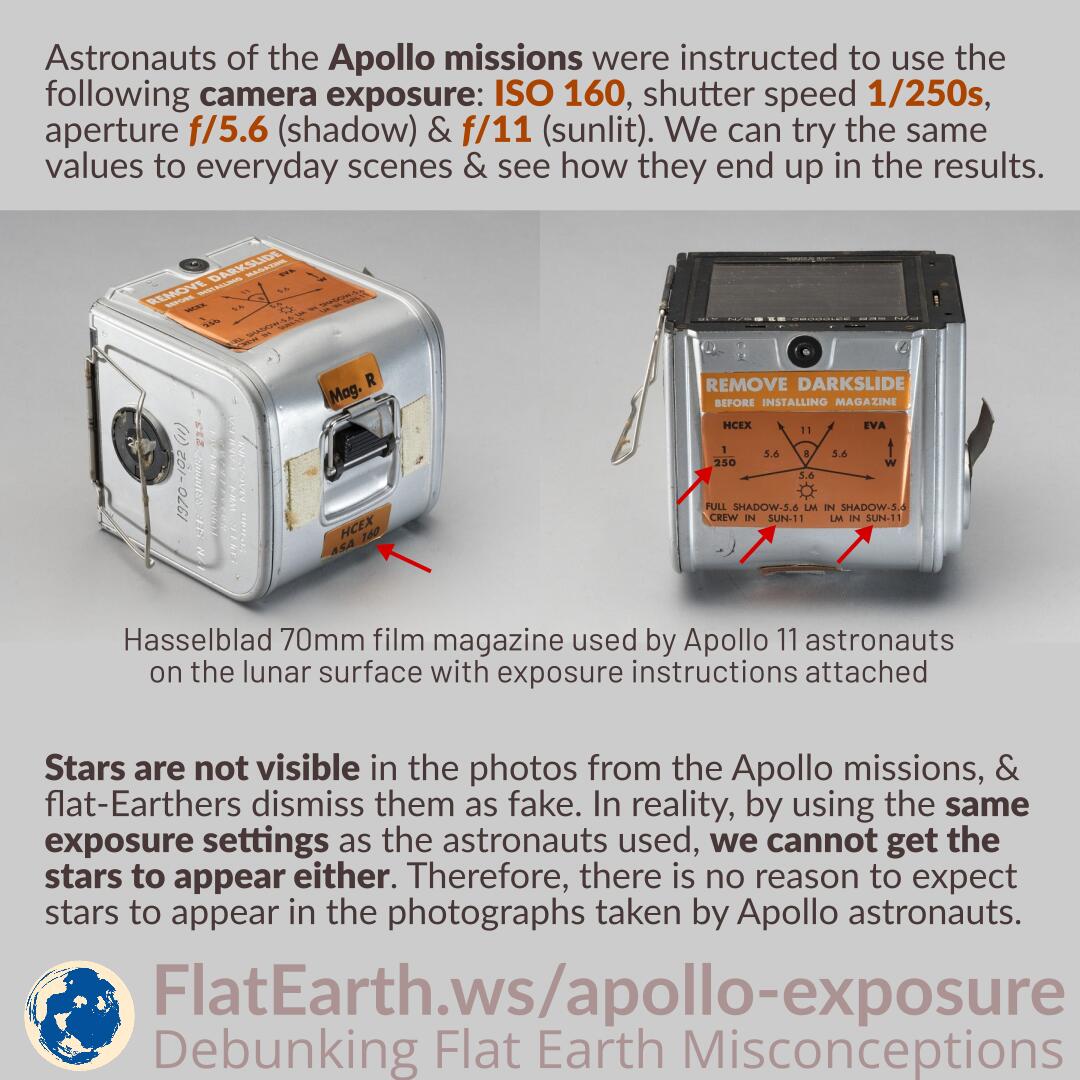Cameras used by Apollo astronauts were equipped with ASA 160 film (equivalent ISO 160 in digital cameras). And they were instructed to use the following camera exposure values: shutter speed 1/250s, aperture f/5.6 (in shadow), and f/11 (sunlit). We can try the same values to everyday scenes and see how they end up in the results.
Stars are not visible in the photos from the Apollo missions, and flat-Earthers use the fact to dismiss them as fake. In reality, by using the same exposure settings as the astronauts used, we cannot get the stars to appear either. Therefore, there is no reason to expect stars to appear in photographs taken by Apollo astronauts.
Continue reading “Camera Exposure Settings in the Apollo Missions”




